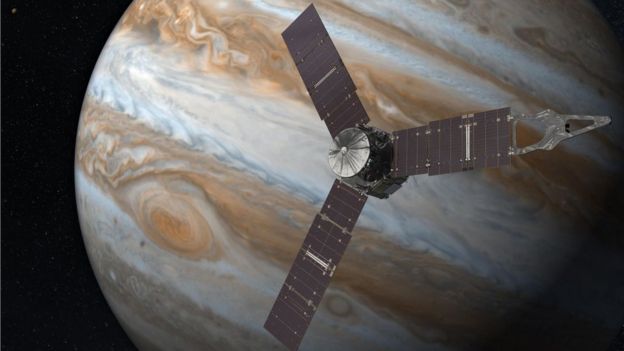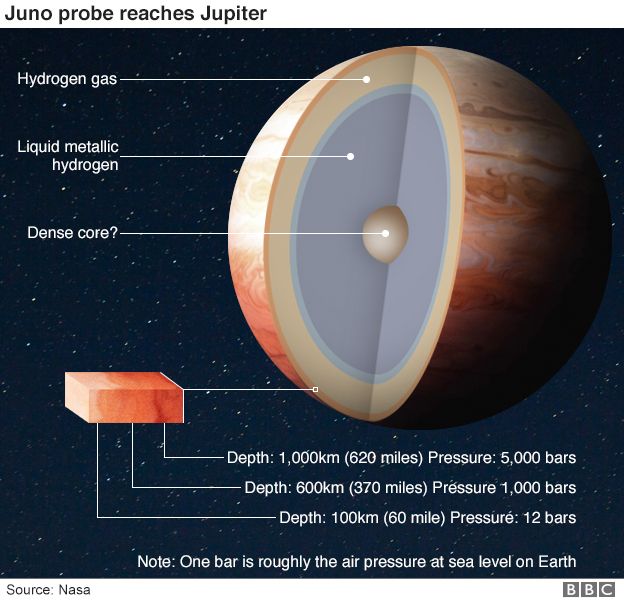
Juno's mission is to fly around Jupiter 30 times, gathering imagery and data

The American space agency's new Juno mission to Jupiter has returned its first imagery since going into orbit around the gas giant last week.
At the moment, scientists are just relieved to know that the equipment is in good health after its encounter with Jupiter's harsh radiation environment during the spacecraft's orbit insertion maneuver on 5 July.
The mission team is now turning on all the probe's instruments to check their status.
A period of calibration lies ahead before the serious business of studying Jupiter begins in October. It should be mid-way through that month that a further engine burn puts the spacecraft in a tight, 14-day orbit around the planet. There will then follow a good 30-plus revolutions of the massive world, with many passes getting under 5,000km from its cloud tops.
The image on this page was acquired on Sunday, when Juno was some 4.3 million km from Jupiter. Evident in the picture are the gas giant's coloured atmospheric bands. Unmistakable, also, is the famous Great Red Spot - the colossal storm that has raged on the planet for hundreds of years.
Juno's goal over the next 18 months will be to try to understand what makes Jupiter tick. Scientists plan to use the spacecraft's instruments to sense the planet's deep interior. They think the structure and the chemistry of its insides hold the essential clues to how this giant world formed some four-and-a-half-billion years ago.

The really big question is whether or not Jupiter has a solid core. Scientists are champing at the bit to get started analyzing the datastream from Juno.
Howdy PIC
ReplyDeleteThe Cubs is going to love this , they are exploring everything .
Got to WAG , you have 2 notes
Love BAW
Ok Luv...Thanks
ReplyDelete